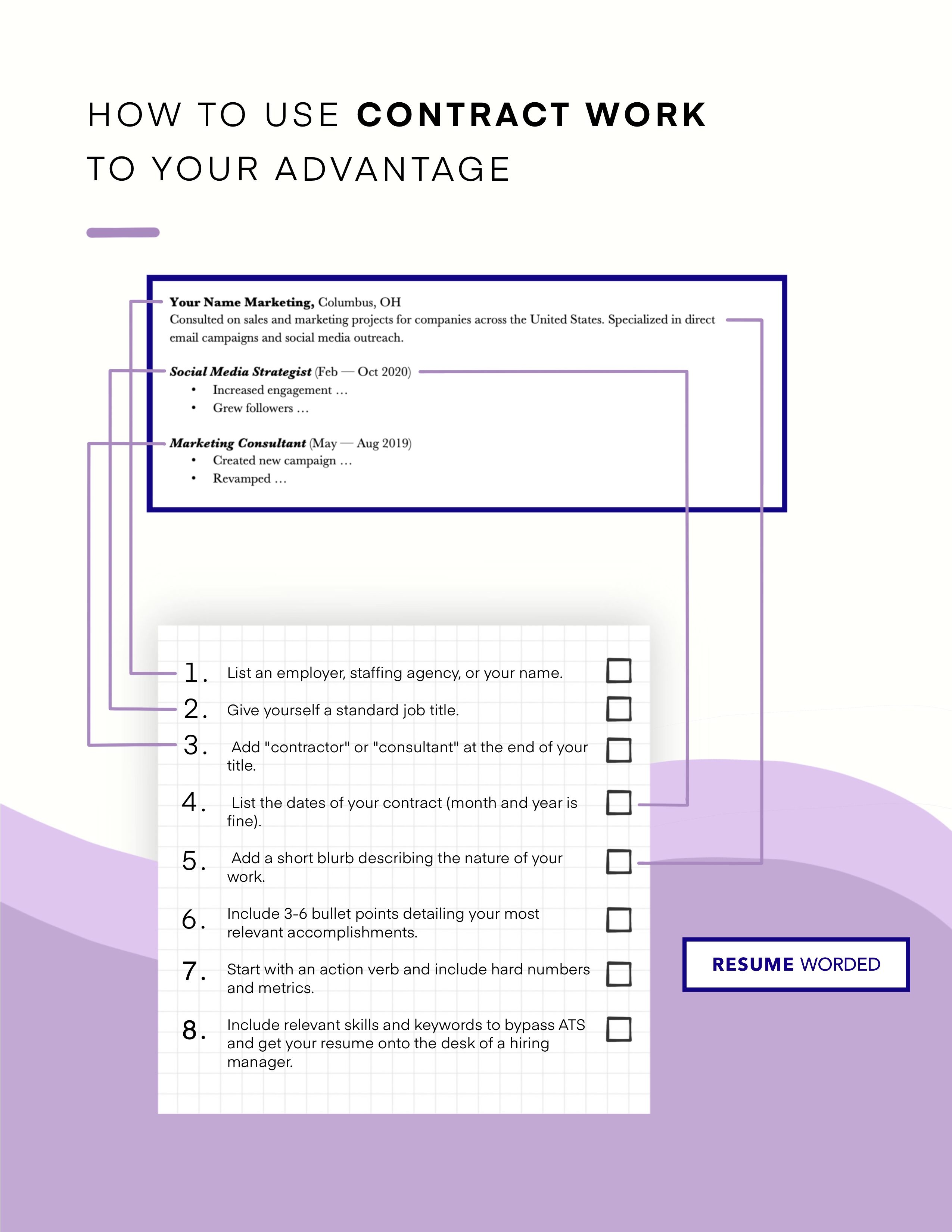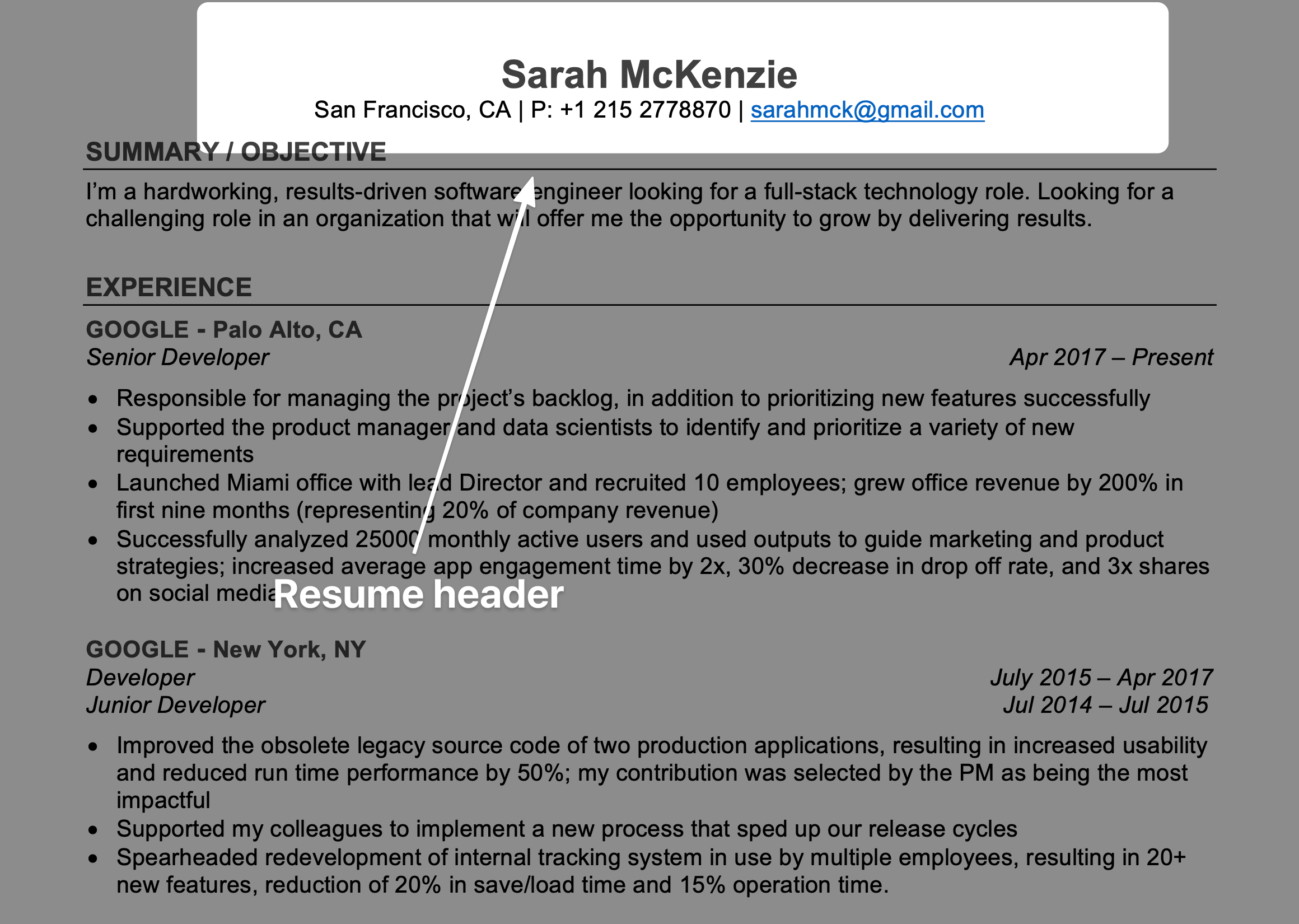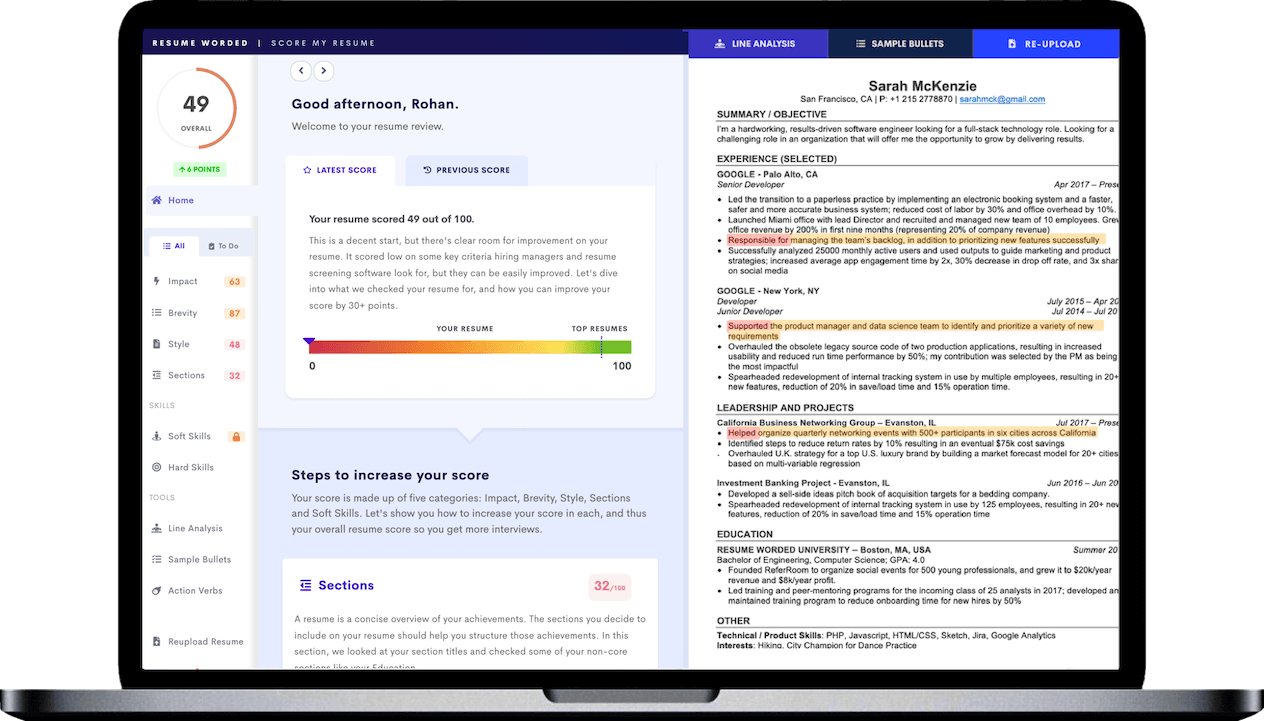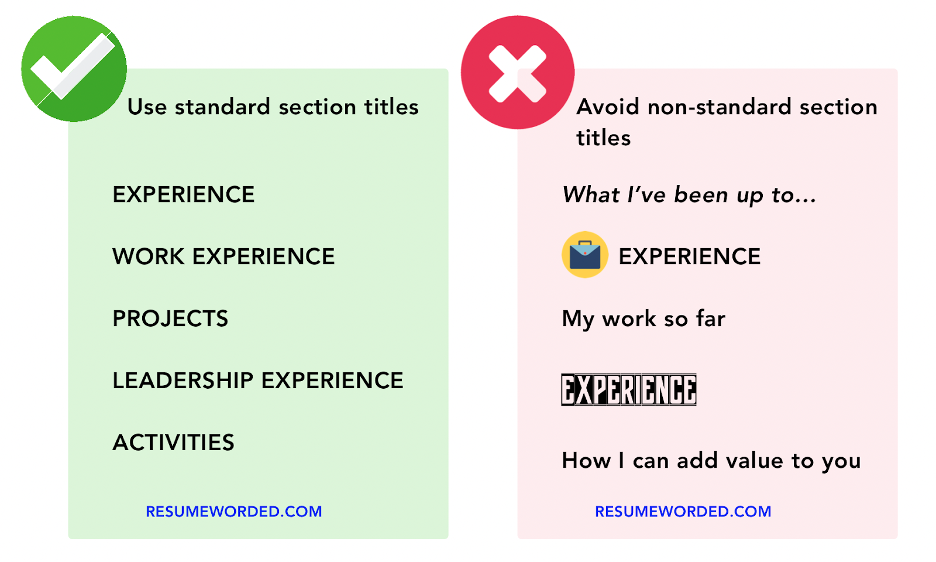In 2025, more companies are turning to contract work, so understanding how to present this experience on your resume has never been more important. This could include contract positions, temp work (directly or through an agency), freelancing, consulting, and any other kind of work that was intentionally short-term.
Listing contract jobs on your resume risks the appearance of job-hopping. On the other hand, leaving them off your resume is likely to leave large gaps in your job history. Either one is a major red flag to employers — so how do you avoid it?
In this article, we'll provide a step-by-step guide on how to list contract work on your resume, giving you a better chance to showcase your value to potential employers. We’ll dive into exactly what contract jobs you should include or leave off your resume. And we’ll provide tips to ensure each one showcases your adaptability, resilience, and ability to deliver value across different roles and industries.
Use contract work to your advantage
Contract and temporary work belong on your resume. Listed correctly, these jobs can strengthen your work history and demonstrate valuable skills. The trick is to make them work for you, not against you. In this section, we'll discuss how to put contract work on your resume in a way that emphasizes your flexibility, adaptability, and achievements.
Demonstrate flexibility and diversity of experience
When putting together your resume for contract work, think about the various industries, teams, and projects you’ve been a part of, and how you adapted to each new environment. Be sure to include any instances where you had to quickly adjust to new technologies, strategies, or working practices.
For example, you could write:
- Adapted to four different industries (healthcare, finance, education, technology) within a span of two years, effectively understanding and contributing to diverse project objectives.
Showcase adaptability
Detailing the skills you had to learn quickly or the challenges you had to overcome in your different roles. Discuss how you've rapidly grown into various roles, learned new systems, or grasped complex concepts.
For example, you could write:
- Leveraged adaptable learning capabilities to master three new project management software platforms in the span of six months.
Focus on your achievements
Like everything else on your resume, contract work needs to emphasize your achievements, not just account for how you’ve been spending your time. Your achievements should be quantifiable, results-oriented, and relevant to the positions you’re applying for. Focus on your ability to deliver results, regardless of the contract's nature or duration.
For example, you could write:
- Developed a new content strategy that increased web traffic by 30% in 3 months for a startup in the education sector.
How to list contract work on your resume
- List an employer. This can be the staffing agency (if you used one) or your own name.
- Give yourself a standard job title.
- Add "contractor" or "consultant" at the end of your title.
- List the dates of your contract (month and year is fine).
- Add a short blurb describing the nature of your work.
- Include 3-6 bullet points detailing your most relevant accomplishments.
- Start with an action verb and include hard numbers and metrics.
- Include relevant skills and keywords to bypass ATS and get your resume onto the desk of a hiring manager.
- Use a free resume checker to get instant feedback on how to optimize your resume.
If you want to check if you’ve listed contract work the right way, upload your resume to the tool below — it’ll let you know if your temporary experience highlights quantifiable achievements and valuable skills.
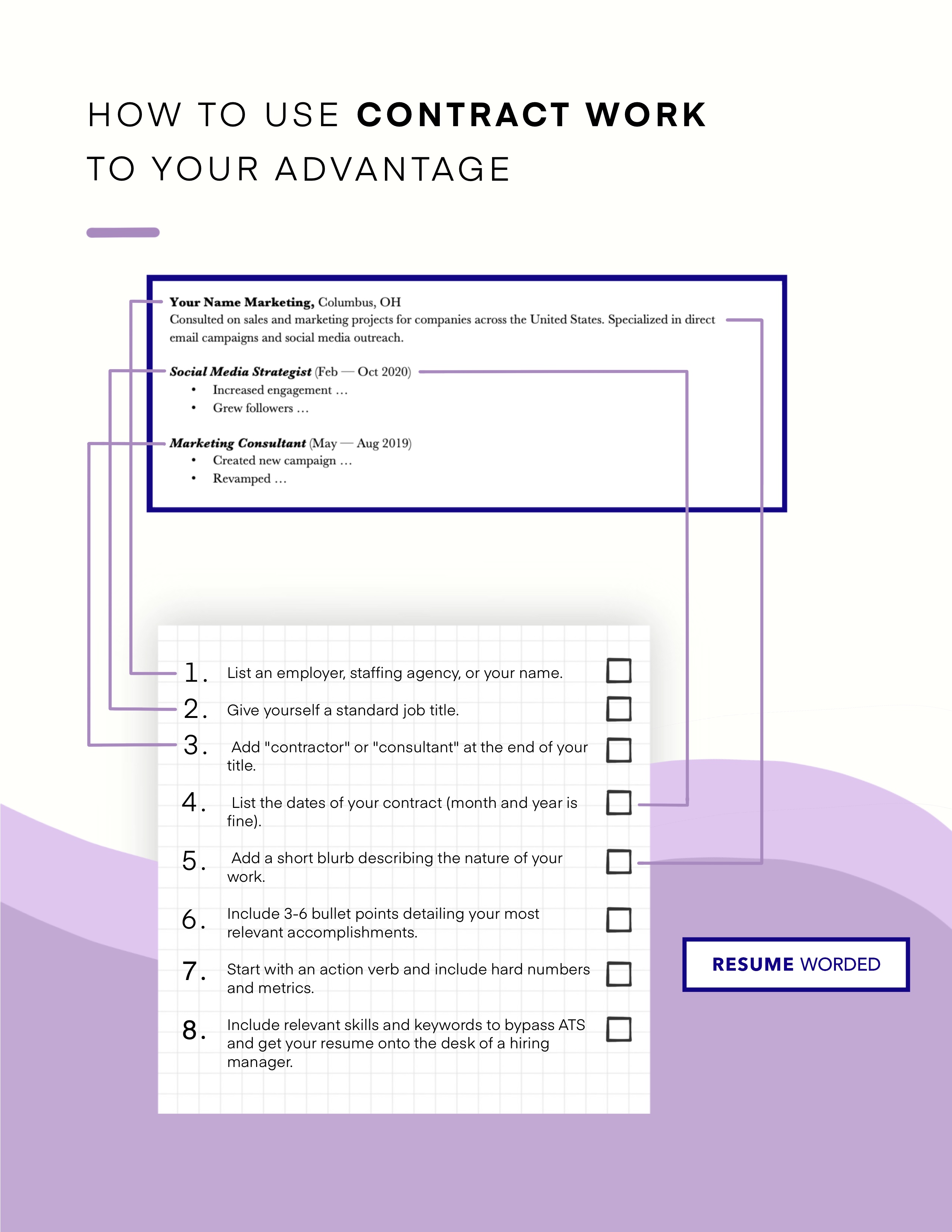
Here's a template for listing contract work on your resume that you can copy and paste:
YOUR NAME CONSULTING SERVICES, Columbus, OH
Social Media Marketing and SEO Consultant (Jun 2017 – Present)
Developed strategic insights for seven medium-large companies ($5M+/year) to improve SEO, web traffic and conversions. Revamped and implemented new websites for four companies.
Selected Projects
Name of project
- 1-3 bullet points in the format [Action Verb] [Accomplishment] [Metric], e.g. Search Engine Optimization project for American pet store
- Analyzed data from 25000 monthly active users and used outputs to guide marketing and product strategies; increased average app engagement time by 2x and 30% decrease in drop off rate
Website Redesign for Top 5 Hospital in USA
- Drove redevelopment Of internal tracking system in use by 125 employees, resulting in new features, reduction of 20% in save/load time and 15% operation time
- Overhauled the obsolete legacy source code of two production applications, resulting in increased usability and reduced run time performance by 50%
Next, we provide some examples on how to show contract work on your resume, depending on your unique situation:
What contract work should look like on your resume
If you used a staffing agency
If your contract jobs were all provided by a single staffing agency, list that agency as your employer. This format allows you to group a large number of jobs underneath a single heading, which makes your job history look more uniform and keeps your resume easy to read.
You can also include the company you worked for — this is optional, but it can help provide extra context. Just make sure you’re not representing the nature of your employment.
Group your experience
If you’ve held a few positions with different companies or agencies, it’s still possible to group these together. Think about what they have in common — like a similar industry or type of role — and list them accordingly.
If you were an independent contractor
If you’ve done a lot of freelance or contract work directly, rather than through an agency, there’s nothing stopping you from creating your own firm and listing your experience under that heading.
Using a grouped firm name — even if it's your own — looks more professional than a collection of unrelated freelance or temporary jobs (since it does not show you've had any gaps), and listing your work under one heading gives you the opportunity to emphasize the most relevant skills you’ve picked up. It also shows recruiters that you have a focus in one specific discipline or industry.
Related: How To List Contract Work on LinkedIn
Label your experience
If most of your job experience is full-time and you’ve only held one or two temporary positions, the simplest way to list contract jobs on your resume is to label them. List these jobs as you would any other, but label them clearly with ‘temporary,’ ‘temp,’ or ‘contract.’ It doesn’t matter which one you choose — but be consistent, and use the same format throughout your resume.
Highlight specific experiences
Underneath the employer section — which could be a staffing agency or your own contracting firm — write a short blurb that contextualizes your experience.
This works best if you’ve held a number of temporary or contract positions with similar titles or duties, but if not, try to find a common theme to connect your work. This approach is all about presenting a meaningful and consistent job history, so focus on highlighting your most relevant accomplishments from each assignment.
List specific dates
Having lots of contract jobs is one situation where it pays to list specific months — not just years — on your resume. Again, if you have a lot of these, it’s best to group them under a single heading, like a staffing agency. Underneath that, you can list each company or position and the exact dates you worked for them.
List temporary jobs in their own section
If none of the approaches above work for you — for example, if you’ve held a few different contract positions in between full-time jobs — another solution is to create a separate section on your resume for temporary jobs.
This might be a good idea if the temp work you’ve done isn’t related to your current field but fills what would otherwise be large gaps in your work history. List your relevant work experience as normal, with a ‘Contract Work’ section underneath.
You don’t need to list every job
Not all contract jobs need to make their way onto your contract work resume. If a particular job doesn’t strengthen your candidacy, leave it off! This is especially important if you have a long list of temporary experiences. It’s okay to only include the positions that are the most relevant and best demonstrate your skills.
Ask yourself these questions when deciding which contract jobs to include:
- Did this job provide me with skills or experiences that are relevant to the position I am applying for?
- Did I achieve notable successes in this job that I can quantify or otherwise highlight?
- Did this job contribute to my professional growth or offer a stepping stone to more advanced roles in my career?

